Although organic matter is important in soil, orchardists usually don’t think much about it. They are too busy managing their crops and trees, controlling pests and diseases, irrigating, managing labor, and doing other essential things. Plus, many orchardists think that supplying organic matter to soil is too costly.
Organic matter makes up only a small part of a soil (at best 5 percent), yet the organic matter packs a mighty punch in the orchard. When the orchardist builds up organic matter in soil, he or she contributes more in the longterm to healthy soil and trees than does any other resource—far greater than the 2 to 5 percent organic matter suggests.
Here, we show why organic matter is important, what it is, where it comes from, and how the orchardist can build it up in soil.
Why is organic matter important?
Organic matter in soil affects the growth and production of fruit trees chemically, biologically, and physically in the following ways:
—Directly and indirectly provides nutrients to the trees and cover crops
—Provides nutrients and energy for the many organisms (microorganisms and animals) in soil
—Helps to buffer soil against big swings in pH when chemicals are added to soil
—Improves structure and resilience of soil, and so affects the supply of water and air to roots and microorganisms
—Organic residues act as slow-release fertilizers. The nutrients attached to the humus are not easily leached down to the groundwater away from the roots. However, the orchardist still needs to add inorganic fertilizer to make up for nutrients removed at harvest.
What is soil organic matter?
Organic matter in soil ranges from fresh unchanged organic materials to highly decomposed organic materials. So the organic matter consists of soil biota (living organisms and roots), plant fragments, and polysaccharides, proteins, fats, lignin, waxes, resin, humus, and charcoal.
Where does organic matter come from?
Most organic matter is found in the surface soil, where most of the roots are, and so comes mainly from plants and soil biota. Normal, healthy roots continually release organic exudates into soil. Other plant residues, such as leaves and shoots, plus organic mulch or manures added by the orchardist, also contribute to organic matter in soil.
Soil biota and decomposition of organic matter
Soil biota in the orchard include roots and beneficial and harmful organisms, ranging from the smallest viruses (0.25 micron) to bacteria (0.3 micron) to actinomycetes (0.5 to 2 microns wide) and fungi (less than 15 microns wide) to the largest animals, e.g., earthworms (more than 10 mm wide). Altogether, the soil biota can weigh up to 21 tonnes per hectare (8.5 tons per acre).
Soil biota use the organic residues for food and energy and successively decompose complex organic molecules and release other organic compounds, which other biota can use to build into new organic molecules or store in their own bodies. At the same time, the biota release carbon dioxide, energy, water, and inorganic materials, such as nitrogen, phosphorus, and sulfur, and micronutrients that plants and biota can use. There is generally a high turnover of biota in soil, which continues to add organic matter. Fine roots and hyphae do not live long in soil, but are fairly quickly replaced by new roots and microorganisms.
Amount of organic matter
The amount of organic matter in soil depends on:
—amount and quality of the organic residues returned to soil
—soil texture, depth, and density
—soil pH
—temperature, water content, and aeration of soil
—microbial population
Sometimes a soil test shows organic matter as organic carbon. To calculate the percentage of organic matter, multiply the percentage of organic carbon by 1.6.
Organic residues of high quality, i.e., with a low ratio of carbon to nitrogen (less than 18:1), are decomposed quickly as there is enough nitrogen to stimulate microbial activity; organic residues with a high carbon-to-nitrogen ratio of more than 60:1 are decomposed very slowly. Simple sugars, simple proteins, and starch are easily decomposed, whereas hemicellulose, cellulose, fats, waxes, and resins are slowly decomposed.
Lignin comes from cell walls of plants and some algae, and is decomposed very slowly. Charcoal is inert so is not further decomposed. Eventually, the complex organic matter, humus, is produced and darkens the soil.
For each soil, there is a limit to the amount of organic matter that can be stored. Organic matter is more quickly decomposed in sandy soils, so they contain less organic matter than do clay soils. The deeper the soil, the more organic matter it can hold. Soils that are less dense are usually better aerated and drained and are warmer, so that plants grow better, releasing more organic residues into soil and supporting more biological activity.
Soils in wetter and cooler climates generally contain more organic matter than do soils in drier and warmer climates. This is because plants grow better with high rainfall and a long growing season, adding more organic residues; yet, bacteria are less active and decompose the organic residues slowly. Very wet soils, such as swamps, contain little air and biological activity, so decomposition is slow, and the percentage of organic matter is high.
Soil pH also affects the supply and decomposition of organic materials in soil. It is best to aim for a pH of about 5.8 to 6.5 so that the plants grow well and add plenty of organic residues to soil.
Organic matter and nutrient supply
There is a significant correlation between the percentage of organic matter in soil and soil fertility. In Australian conditions, most well-managed soils should have 2 to 4 percent organic matter, depending on the texture of the soil. Less than 1.5 percent is usually low and can lead to waterlogged or dehydrated soil and imbalanced nutrients. On the other hand, in soils with more than 5 percent organic matter, herbicides often become attached to the organic matter and are inactivated, so the grower needs to apply more herbicide.
Nutrients come not only from the original plant residues, but some nutrients become attached to humus (highly degraded organic matter in soil) and are slowly released for plants and other soil biota. The humus provides both negative and positive charges that can hold and exchange nutrients.
Nutrients with positive charges, such as potassium, calcium, and magnesium, adhere to the negative charges on the humus, whereas nutrients with negative charges, such as phosphate and sulphate, adhere to positive charges. In both cases, the nutrients remain available to plants and are not leached down beyond the root zone.
A soil’s cation exchange capacity (CEC) is a measure of the net negative charge of dry soil and, therefore, is a measure of the amount of positive nutrients that can be stored. Soils with a low CEC have a low net negative charge and do not hold positive nutrients in the soil as well as do soils with a high CEC. Organic matter, with its negative charge, can help improve soils with low CEC.
Organic matter also decreases the fixation of phosphorus and potassium in the soil and forms metal-organic complexes that stabilize the micronutrients that otherwise might not be available for plants.
Organic matter and soil stability
Organic matter controls the stability of soil so that the aggregates do not collapse or erode when wetted quickly. Organic mulch or growing plants protect the soil from heavy rain, so a hard crust does not form when the soil dries. Large aggregates (more than 2 mm) are held together by a fine network of root and fungal hyphae, and fragments of plants and dead microbial cells become encrusted with clay particles to form stable smaller aggregates. The organic matter also encourages soil animals to produce tunnels that enable soil, water, and roots to move through soil.
Silt and clay soils with less than 1.5 percent organic matter have small, closely packed aggregates and many very small pores. When wetted, any poorly structured, large aggregates break down, or slake, into micro-aggregates. When dry, the micro-aggregates block pores that are too small for water to move through, causing the soil to become poorly aerated when wet and excessively hard when dry.
How to increase organic matter
As you prepare the soil in summer and fall before you plant trees, till (rip and/or cultivate) the soil then grow ryegrass, but kill it in winter. Once the trees are planted, do not till the soil again, as repeated tillage oxidizes (burns) organic matter and decreases activity of beneficial organisms, worsening the soil structure, and the supply of water, air, and nutrients.
Each year, manage the soil carefully with a cover crop or organic mulch to:
—add organic residues
—protect the surface of the soil from heavy rain
—decrease loss of water by evaporation
—increase storage of water
—increase the activity of beneficial biota in soil
In winter, allow weeds to grow. Throw the green residues of the weeds onto the tree rows when you slash. In spring and summer, use herbicides to kill the weeds in the tree rows so that the weeds do not compete with the trees for water and nutrients. The green and dead weeds on the soil surface protect the soil surface from heavy rain, and the dead roots add organic matter and maintain a soft, stable, and porous surface soil. •
Dr Judith Tisdall is a soil scientist and a former senior lecturer in soil science at La Trobe University, Melbourne, Australia. Bas Van den Ende is a tree fruit consultant in Australia’s Goulburn Valley.

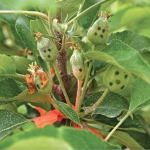
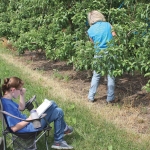
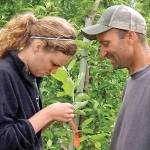
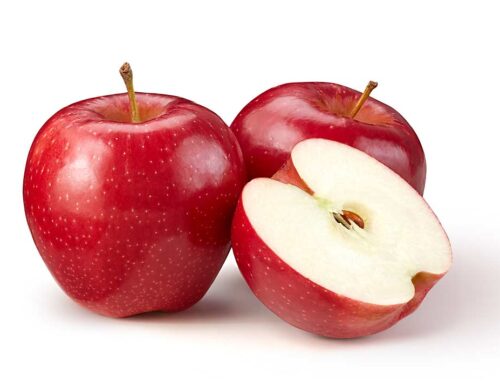
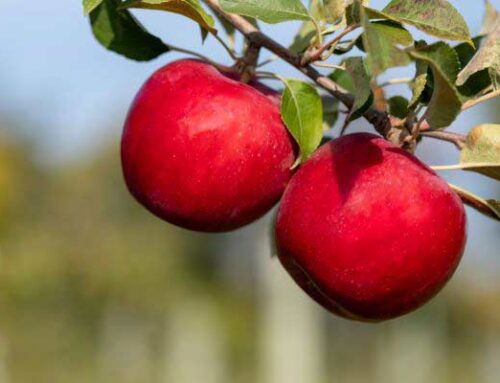
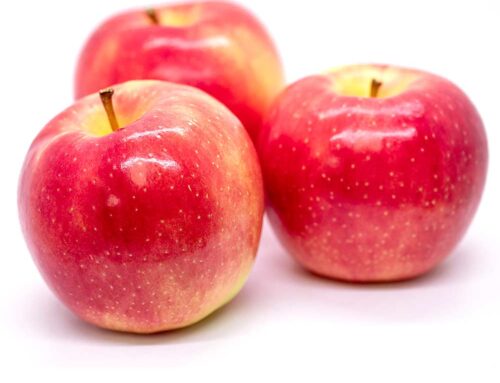
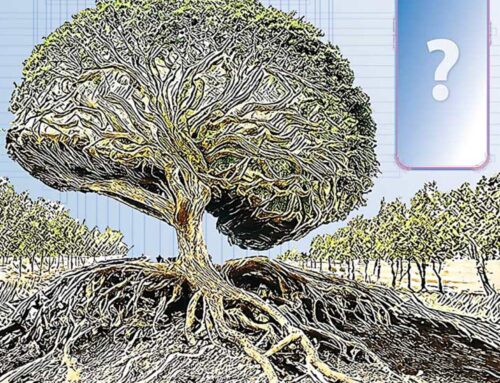

Leave A Comment